Luyang Wang
MIPI 2024 Challenge on Nighttime Flare Removal: Methods and Results
Apr 30, 2024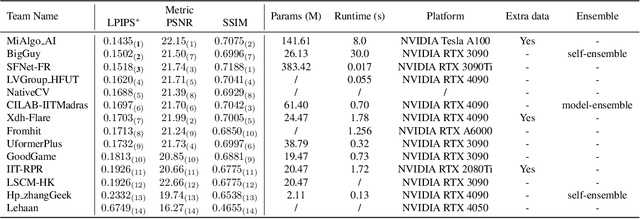

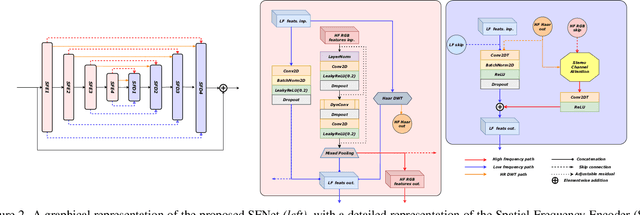
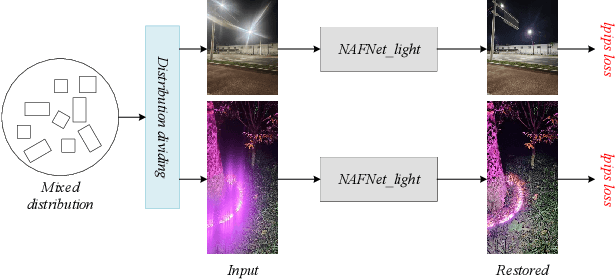
Abstract:The increasing demand for computational photography and imaging on mobile platforms has led to the widespread development and integration of advanced image sensors with novel algorithms in camera systems. However, the scarcity of high-quality data for research and the rare opportunity for in-depth exchange of views from industry and academia constrain the development of mobile intelligent photography and imaging (MIPI). Building on the achievements of the previous MIPI Workshops held at ECCV 2022 and CVPR 2023, we introduce our third MIPI challenge including three tracks focusing on novel image sensors and imaging algorithms. In this paper, we summarize and review the Nighttime Flare Removal track on MIPI 2024. In total, 170 participants were successfully registered, and 14 teams submitted results in the final testing phase. The developed solutions in this challenge achieved state-of-the-art performance on Nighttime Flare Removal. More details of this challenge and the link to the dataset can be found at https://mipi-challenge.org/MIPI2024/.
Context-Aware Drive-thru Recommendation Service at Fast Food Restaurants
Oct 13, 2020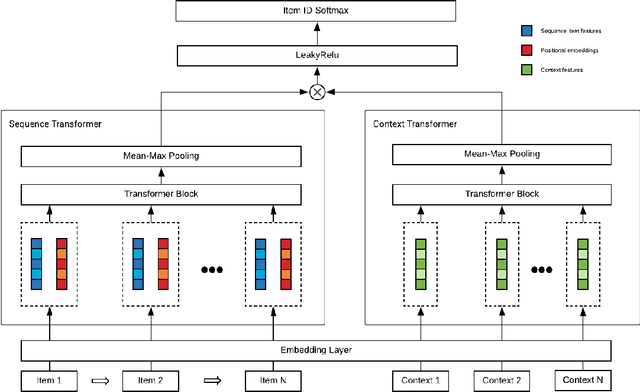

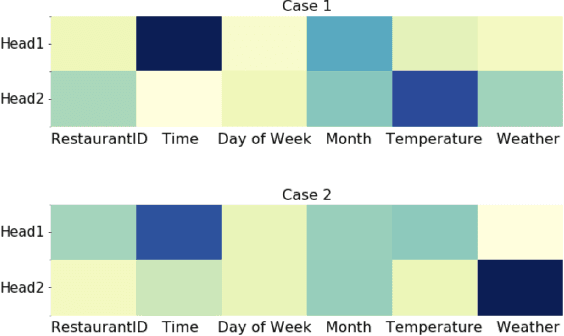
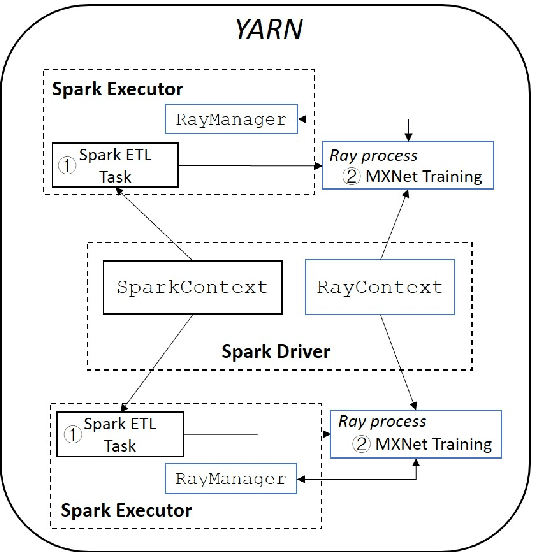
Abstract:Drive-thru is a popular sales channel in the fast food industry where consumers can make food purchases without leaving their cars. Drive-thru recommendation systems allow restaurants to display food recommendations on the digital menu board as guests are making their orders. Popular recommendation models in eCommerce scenarios rely on user attributes (such as user profiles or purchase history) to generate recommendations, while such information is hard to obtain in the drive-thru use case. Thus, in this paper, we propose a new recommendation model Transformer Cross Transformer (TxT), which exploits the guest order behavior and contextual features (such as location, time, and weather) using Transformer encoders for drive-thru recommendations. Empirical results show that our TxT model achieves superior results in Burger King's drive-thru production environment compared with existing recommendation solutions. In addition, we implement a unified system to run end-to-end big data analytics and deep learning workloads on the same cluster. We find that in practice, maintaining a single big data cluster for the entire pipeline is more efficient and cost-saving. Our recommendation system is not only beneficial for drive-thru scenarios, and it can also be generalized to other customer interaction channels.
Generalizing Monocular 3D Human Pose Estimation in the Wild
Apr 11, 2019



Abstract:The availability of the large-scale labeled 3D poses in the Human3.6M dataset plays an important role in advancing the algorithms for 3D human pose estimation from a still image. We observe that recent innovation in this area mainly focuses on new techniques that explicitly address the generalization issue when using this dataset, because this database is constructed in a highly controlled environment with limited human subjects and background variations. Despite such efforts, we can show that the results of the current methods are still error-prone especially when tested against the images taken in-the-wild. In this paper, we aim to tackle this problem from a different perspective. We propose a principled approach to generate high quality 3D pose ground truth given any in-the-wild image with a person inside. We achieve this by first devising a novel stereo inspired neural network to directly map any 2D pose to high quality 3D counterpart. We then perform a carefully designed geometric searching scheme to further refine the joints. Based on this scheme, we build a large-scale dataset with 400,000 in-the-wild images and their corresponding 3D pose ground truth. This enables the training of a high quality neural network model, without specialized training scheme and auxiliary loss function, which performs favorably against the state-of-the-art 3D pose estimation methods. We also evaluate the generalization ability of our model both quantitatively and qualitatively. Results show that our approach convincingly outperforms the previous methods. We make our dataset and code publicly available.
 Add to Chrome
Add to Chrome Add to Firefox
Add to Firefox Add to Edge
Add to Edge